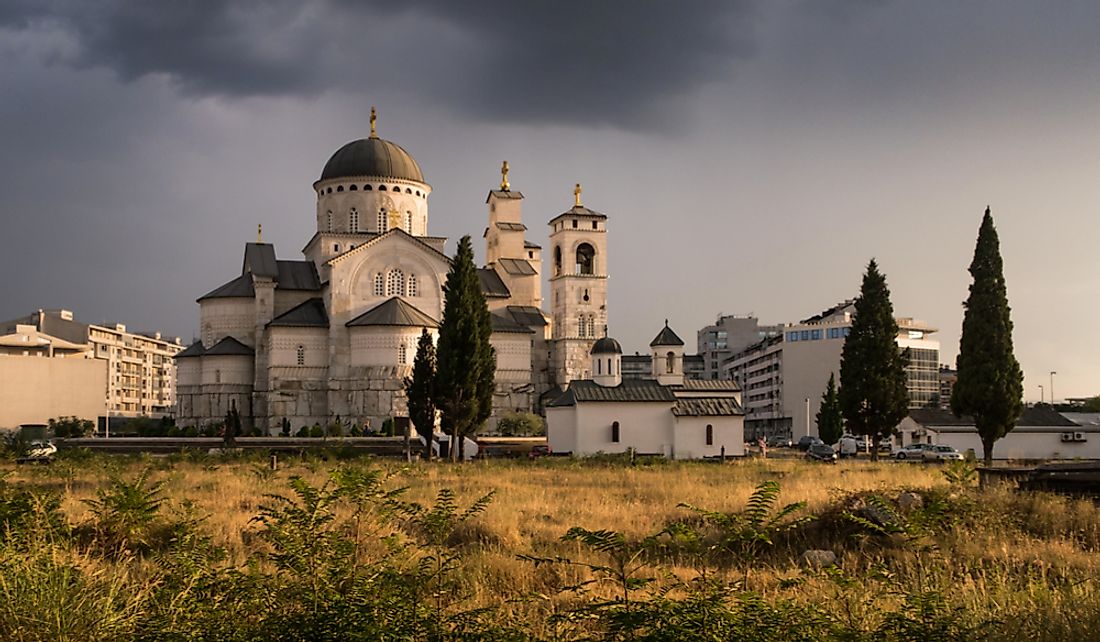The Culture Of Montenegro

The Southeastern European country of Montenegro has a pluralistic and diverse culture that is influenced by a variety of cultures of the neighboring regions. The Balkan country borders the Adriatic Sea as well as Bosnia and Herzegovina, Serbia, Albania, Croatia, and the disputed territory of Kosovo. Formerly part of Yugoslavia, Montenegro achieved independence from Serbia in 2006.
Ethnicity, Language, and Religion in Montenegro
Montenegro is home to a population of around 614,249 individuals. Montenegrins account for 45% of the country’s population. Serbians (28.7% of the population) constitute the next biggest ethnic group. Bosniaks, Albanians, Muslims, Romanis, Croats, and others also live in the country. Montenegrin is the official language of Montenegro. Serbian, Bosnian, Albanian, etc., are some other languages spoken in the nation. Orthodox Christianity is the religion of the majority in Montenegro. 19.1% of the population adheres to Islam while Catholic Christians and atheists represent 3.4% and 1.2% of the population, respectively.
Montenegrin Cuisine
The cuisine of Montenegro reflects influences of a variety of cuisines including Italian, Turkish, Levantine, Hungarian, and Croatian cuisines. The traditional dishes of Montenegro’s Adriatic coast and heartland region has a distinctly Italian flavor. Stuffed capsicums, meatballs, japraci, Italian-style bread, cheese, soups, and stews are popular in these regions. Pilav, pita, kebab, sama, etc., are some Levant and Turkish style dishes consumed in Montenegro. Tulumba and baklava are Turkish sweets that are also a favorite in the country. Hungarian dishes like goulash, satarash, etc., and Croatian desserts are also eaten in Montenegro.
Literature, Art, and Craft in Montenegro
Montenegro has a rich literary heritage that dates back centuries. The first Montenegrin book was published about five centuries back. The region’s first state-owned printing press was established in the 15th century. The country’s coastal area was heavily influenced by Renaissance Italy. Many renowned Renaissance-era writers like Ludovico Pasquali and Giovanni Polizzi were from Montenegro. Oral folk epic poetry from the country is also highly praised.
Montenegro has also made great contributions in art and craft. Woodcarving, textile weaving, and icon painting are some of the traditional Montenegrin crafts. Europe’s oldest discovered musical instrument is from Montenegro. It is a Paleolithic era whistle made from bone.
Performance Arts in Montenegro
The music scene of the country is influenced by both indigenous musical traditions and Western musical influences. Initially, music from Montenegro was religious in nature. In the 19th century, a Catholic singing academy was established. The gusle (a single-stringed musical instrument) was heavily used to produced traditional Montenegrin music. In the 20th century, the country’s first secular music school was founded and soon Montenegrin music started flourishing. Jovan Ivanišević was one of the earliest talented Montenegrin composers. Today, various international musical styles like pop, rock, hip hop, and dance music have also gained popularity in Montenegro, especially among the country’s urban youth. The Oro or Eagle dance is a popular folk dance in Montenegro. The dance is usually performed between members of the opposite sex as a sign of courtship. It is typically danced during weddings and other celebrations in the country.
Sports in Montenegro
Football (soccer), basketball, volleyball, handball, etc., are some of the most popular team sports played in Montenegro. Football is played throughout the country both informally and professionally. The national football team of the country was founded in 2006. It played in the playoffs for the 2012 UEFA Euro. Montenegro has one of the world’s best water polo teams and the game is often regarded as the country’s national sport. The Montenegrin national basketball team has also won several medals in international competitions.
Life in the Montenegrin Society
The traditional Montenegrin society is patriarchal in nature. Gender roles are usually well-defined. While men are regarded as the breadwinners, women are associated with household work and childcare. However, the number of women entering the workforce has increased significantly over the years. Montenegrin women are now performing well in various fields of employment like administration, public service, academics, etc. However, working women are often expected to take care of domestic tasks, unlike working men.
Marriages in the country are mainly based on the consensual choice of the couple. Women today have gained equal rights in marriage and thus divorces are more common. Both extended and nuclear households are found in Montenegro. Ethnic Albanians tend to live together as one big family and also have many children. Although the ethnic Serbians have smaller families, close relatives usually live in proximity to one another. Inheritance of property is, in general, patrilineal in nature. Funerals hold great importance in the society and those invited are expected to attend the funeral, else relationship ties suffer severely.
Mothers are usually responsible for infant care. The godparents also play a significant role in the upbringing of children. Although not related by blood, they are regarded as part of the spiritual family.
Čojstvo i Junaštvo or "Humanity and Courage” is an ethical ideal that forms the basis of Montenegrin beliefs. The values of integrity, self-sacrifice, dignity, and humility are considered extremely important in the Montenegrin society.











